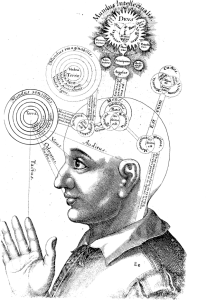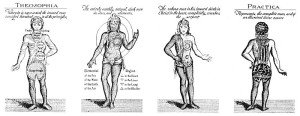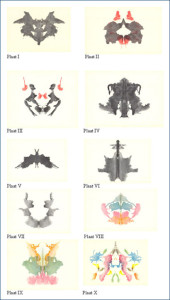hello everyone,
here are some of the documentation I’ve been reading for the past week.
Eric Berne
Analyse transactionnelle et psycotherapie
(transactional analysis and psychotherapy)
The Soul, in many religious, philosophical and mythological traditions, is the incorporeal and, in many conceptions, immortal essence of a living thing.
Although the terms “soul” and “spirit” are sometimes used interchangeably, “soul” can denote a more worldly and less transcendent aspect of a person. According to James Hillman, a psychologist, the soul displays an affinity for negative thoughts and images, whereas the spirit seeks to rise above the entanglements of life and death. The words “soul” and “psyche” can also be used in a synonymous manner; although, “psyche” has more psychological connotations, whereas “soul” is more closely connected to spirituality and religion.
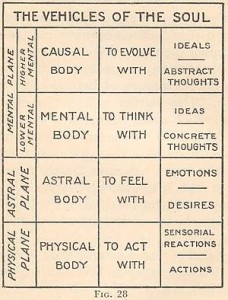
Source http://en.wikipedia.org/wiki/Soul
Consciousness is the quality or state of awareness, or, of being aware of an external object or something within oneself. It has been defined as: sentience, awareness, subjectivity, the ability to experience or to feel, wakefulness, having a sense of selfhood, and the executive control system of the mind. Despite the difficulty in definition, many philosophers believe that there is a broadly shared underlying intuition about what consciousness is. As Max Velmans and Susan Schneider wrote in The Blackwell Companion to Consciousness: “Anything that we are aware of at a given moment forms part of our consciousness, making conscious experience at once the most familiar and most mysterious aspect of our lives.
“The dictionary meaning of the word consciousness extends through several centuries and associated cognate meanings which have ranged from formal definitions to somewhat more skeptical definitions. One formal definition indicating the range of these cognate meanings is given in Webster’s Third New International Dictionary stating that consciousness is:
“A. awareness or perception of an inward psychological or spiritual fact: intuitively perceived knowledge of something in one’s inner self.
B. inward awareness of an external object, state, or fact.
C: concerned awareness: INTEREST, CONCERN — often used with an attributive noun.
(2): the state or activity that is characterized by sensation, emotion, volition, or thought: something in nature that is distinguished from the physical.
(3): the totality in psychology of sensations, perceptions, ideas, attitudes and feelings of which an individual or a group is aware at any given time or within a particular time span .
Source http://en.wikipedia.org/wiki/Consciousness
Soul searching: a brief history of the mind/body debate in the neurosciences.
“Abstract Anatomical and physiological understandings of the structure and function of the brain have worked to establish it as the “seat of the soul.” As an organ of reflection, meditation, and memory, the brain becomes synonymous with what defines the “self” through the existence of consciousness–of mind. Thus, the brain has been associated with a range of transcendent concepts–the soul, spirit, mind, and consciousness–that all relate in fundamental ways to each other both in terms of their perceived location within the brain and because of the way each works ultimately to define the person to whom the brain belongs.
In this article, the author provides a brief exploration of how interrelated these categories have been when seen in the context of ancient, Renaissance, early modern, and modern philosophical and medical concerns; how the brain has variously been perceived as home to these intimate states of being; and how practitioners from the neurosciences have reflected on these questions. The author provides novel insights into the interrelationships of philosophy, theology, and medicine by examining these issues through the lens of the history of neuroscience.”
source http://www.researchgate.net/publication/5884911_Soul_searching_a_brief_history_of_the_mindbody_debate_in_the_neurosciences
The human body in symbolism.
“Johann Georg Gichtel, a profound Philosopher and mystic, the most illumined of the disciples of Jakob Böhme, secretly circulated the above diagrams among a small group of devoted friends and students. Gichtel republished the writings of Böhme, illustrating them with numerous remarkable figures. According to Gichtel, the diagrams above, represent the anatomy of the divine (or inner) man, and graphically set forth its condition during its human, infernal, and divine states. The plates in the William Law edition of Böhme’s works are based apparently upon Gichtel’s diagrams, which they follow in all essentials. Gichtel gives no detailed description of his figures, and the lettering on the original diagrams here translated out of the German is the only clue to the interpretation of the charts.
The two end figures represent the obverse and reverse of the same diagram and are termed Table Three. They are “designed to show the Condition of the whole Man, as to all his three essential Parts, Spirit, Soul, and Body, in his Regenerated State.” The third figure from the left is called the Second Table, and sets forth “the Condition of Man in his old, lapsed, and corrupted State; without any respect to, or consideration of his renewing by regeneration.” The third figure, however, does not correspond with the First Table of William Law. The First Table presumably represents the condition of humanity before the Fall, but the Gichtel plate pertains to the third, or regenerated, state of mankind. William Law thus describes the purpose of the diagrams, and the symbols upon them: “These three tables are designed to represent Man in his different Threefold State: the First before his Fall, in Purity, Dominion, and Glory: the Second after his Fall, in Pollution and Perdition: and the Third in his rising from the Fall, or on the Way of regeneration, in Sanctification and Tendency to his last Perfection.” The student of Orientalism will immediately recognize in the symbols upon the figures the Hindu chakras, or centers of spiritual force, the various motions and aspects of which reveal the condition of the disciple’s internal divine nature.”
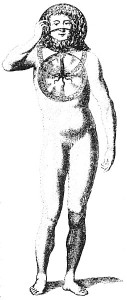 From Law’s Figures of Jakob Böhme.
From Law’s Figures of Jakob Böhme.
Just as the diagram representing the front view of man illustrates his divine principles in their regenerated state, so the back view of the same figure sets forth the inferior, or “night,” condition of the sun. From the Sphere of the Astral Mind a line ascends through the Sphere of reason into that of the Senses. The Sphere of the Astral Mind and of the Senses are filled with stars to signify the nocturnal condition of their natures. In the sphere of reason, the superior and the inferior are reconciled, Reason in the mortal man corresponding to Illumined Understanding in the spiritual man.
From Law’s Figures of Jakob Böhme.
A tree with its roots in the heart rises from the Mirror of the Deity through the Sphere of the Understanding to branch forth in the Sphere of the Senses. The roots and trunk of this tree represent the divine nature of man and may be called his spirituality; the branches of the tree are the separate parts of the divine constitution and may be likened to the individuality; and the leaves–because of their ephemeral nature–correspond to the personality, which partakes of none of the permanence of its divine source.
Source http://www.sacred-texts.com/eso/sta/sta17.htm
Why and how You Daydream.
“When absorbed in intellectual attention we become so inattentive to outer things as to be ‘absent-minded,’ ‘abstracted,’ or ‘distraits.’All revery or concentrated meditation is apt to throw us into this state that transient lapses in the control of attention may lead to a shift in attention from the external world to internal mentation.” Serendipitously, it was while studying the brain’s activation during tasks involving memory and attention that neuroscientists first discovered the neural basis for daydreaming. While in between tasks, the researchers noticed that a set of brain structures in their participants started to become more active. These same structures turned off as soon as the participants began to engage in the cognitive tasks that were the original focus of the research.
Source https://www.psychologytoday.com/blog/fulfillment-any-age/201301/why-and-how-you-daydream
Meditation and brain, update for 2014
Source http://jonlieffmd.com/blog/meditation-and-brain-update-2014

